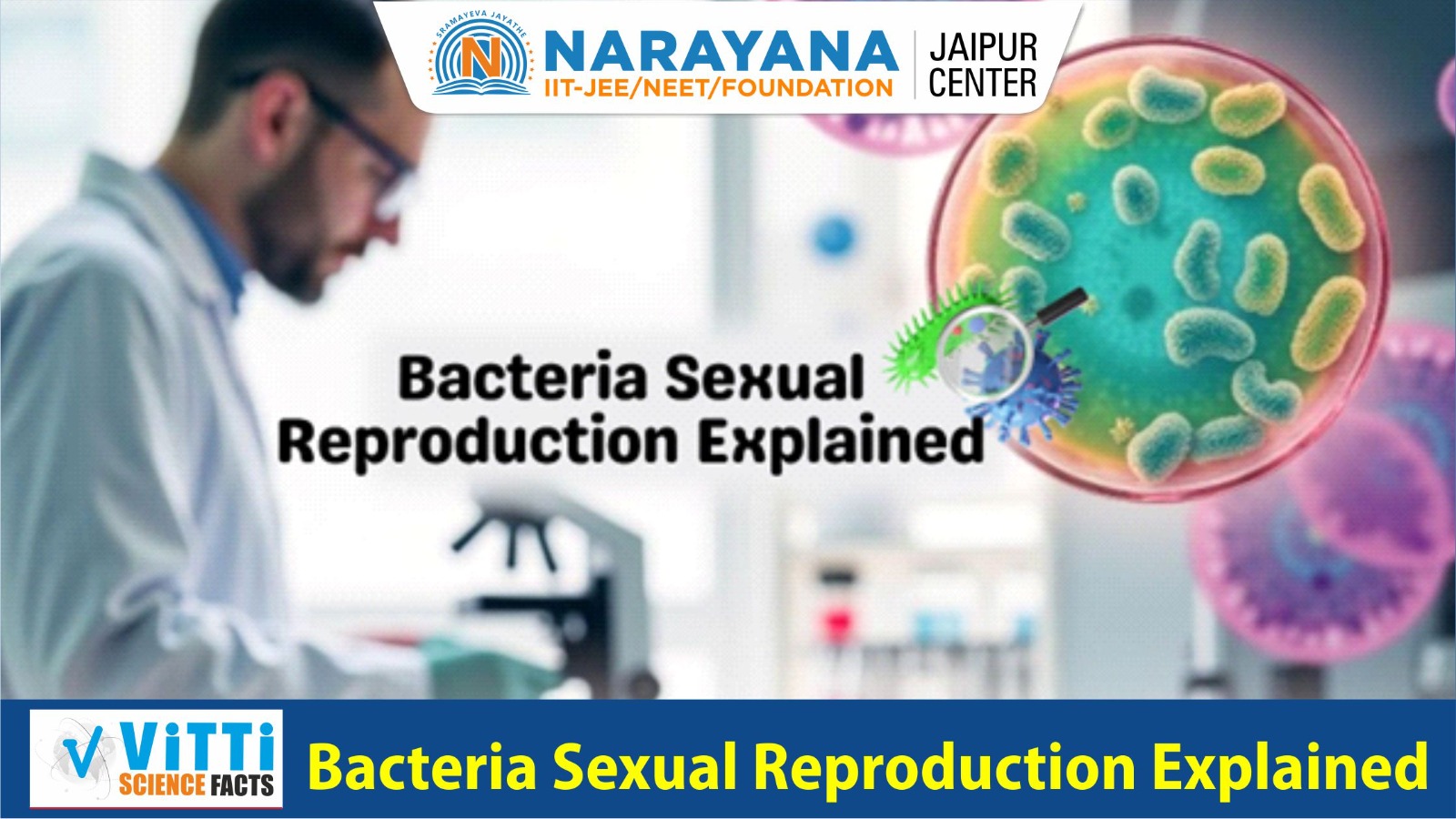Do bacteria reproduce by sexual reproduction?
The straightforward answer is NO. Bacteria cannot reproduce by sexual reproduction.
Then why has NCERT written that “Bacteria reproduce mainly by fission. Sometimes, under unfavourable conditions, they produce spores. They also reproduce by a sort of sexual reproduction by adopting a primitive type of DNA transfer from one bacterium to the other.”
In the text, NCERT itself has clearly explained that it is a sort of sexual reproduction, something which appears as sexual reproduction. It is not a real sexual reproduction. It involves a primitive type of DNA transfer from one bacterium to another.
Now we must understand that sexual reproduction in any organism involves two basic processes.
- Gamete fusion/cell fusion / nuclear fusion
- Meiosis to restore the number of chromosomes
Further reproduction always results in the formation of a new organism. Not the older one gets, modified.
In bacteria, gametes are not formed, and meiosis is not possible. It is because for meiosis, the formation of spindle fibers is necessary for the equal distribution of chromosomes, and spindle fibers are formed by microtubules, which are absent in bacteria.
How does this DNA transfer take place in bacteria?
The DNA transfer from one bacterium to another bacterium is termed genetic recombination. It takes place by three methods:
- Conjugation
- Transduction
- Transformation
1) Conjugation: In this process, the DNA is transferred between two prokaryotic cells (usually of the same species) that are temporarily joined. In bacteria, the DNA transfer is always one-way: One cell donates the DNA, and the other receives it. It takes place with a specialised structure present in some bacteria known as pili (Sing. Pilus).
First, a pilus of the donor cell attaches to the recipient. The pilus then retracts, pulling the two cells together, like a grappling hook. The next step is thought to be the formation of a temporary structure between the two cells, a “mating bridge” through which the donor may transfer DNA to the recipient. However, the mechanism by which DNA transfer occurs is unclear; indeed, recent evidence indicates that DNA may pass directly through the hollow pilus.
The ability to form pili and donate DNA during conjugation results from the presence of a particular piece of DNA called the F factor (F for fertility). The F factor of E. coli consists of about 25 genes, most required for the production of pili.
2) Transduction: In transduction, the bacteriophage virus carries prokaryotic genes from one host cell to another. In most cases, transduction results from accidents that occur during the phage replicative cycle. A virus that carries prokaryotic DNA may not be able to replicate because it lacks some or all of its own genetic material. However, the virus can attach to another prokaryotic cell (a recipient) and inject prokaryotic DNA acquired from the first cell (the donor). If some of this DNA is then incorporated into the recipient cell’s chromosome by crossing over, a recombinant cell is formed.
It is interesting to note that all bacteriophages cannot perform transduction. Only some unique Lysogenic phage viruses can do it.
3) Transformation: In transformation, the genotype and possibly phenotype of a prokaryotic cell are altered by the uptake of foreign DNA from its surroundings. For example, a harmless strain of Streptococcus pneumoniae can be transformed into pneumonia-causing cells if the cells are exposed to DNA from a pathogenic strain. This transformation occurs when a non-pathogenic cell takes up a piece of DNA carrying the allele for pathogenicity and replaces its own allele with the foreign allele, an exchange of homologous DNA segments. The cell is now a recombinant: Its chromosome contains DNA derived from two different cells.
By using transformation experiment of Griffith; Avery, MacLeod and McCarty tried to explain that “DNA is the genetic material in organisms, not proteins or RNA.”
Name: Mukesh Verma
Department: Botany NEET
Narayana Jaipur Center (NIHQ)


